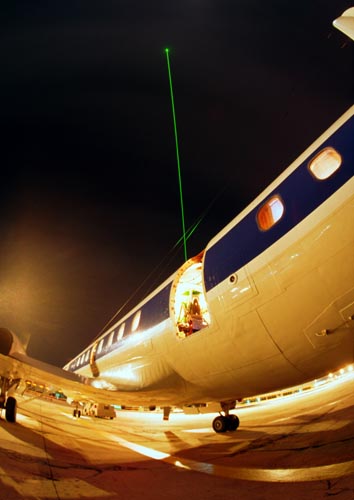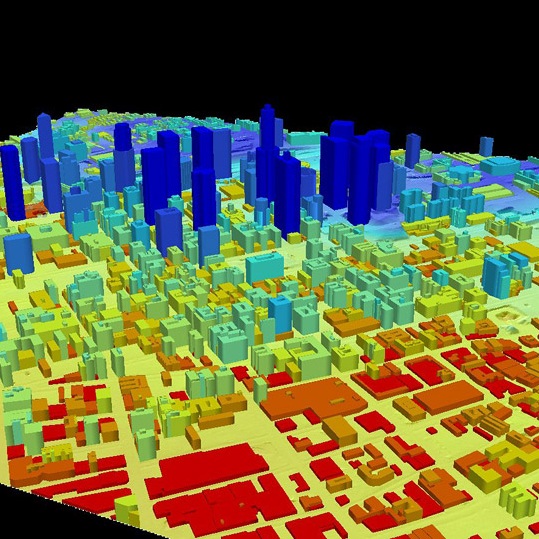What is it?

LIDAR on board electra is calibrated at the airport in Barbados before the 9/15/94 intercept with life in the early morning hours. The LIDAR instrument can be seen through the open hatch of the plane. — LITE-LIDAR in -space technolgoy experiment.
LIDAR is the optical analogue of RADAR (RAdio Detection And Ranging). The only thing that separates LIDAR from RADAR is the energy source. LIDAR’s source being a laser in the optical part of the electromagnetic spectrum. LIDARs are active remote sensors since they include the light source on which the measurement depends. They are used to measure things such as: range and altitude, atmospheric vertical profiles of aerosols and trace gas densities, temperature, cloud cover, wind velocity, shape and size of landscape features, height and density of forests, sea surface roughness. LIDAR comes in three major varieties: range finders, DIAL(DIfferential Absorption LIDAR), and Doppler DIAL.
Range Finder – Conceptually, the simplest LIDAR to understand is the range finder, like one used on a golf course to determine the distance to the hole. In a range finder, a laser sends out a pulse and a receiver, often little more than a lens, a detector, and some electronics, registers a pulse when reflected light is incident on the detector. Since the electronics measures the time interval between when the pulse is emitted and the reflected pulse is sensed and since the speed of light is known, the round-trip distance between the laser and the reflector is simply the speed of light * time interval. An altimeter, which measures the altitude of an object above a fixed level, is a kind of range finder.
DIAL can be used to measure the temperature, density, and pressure of trace gases and aerosols in the atmosphere. Two probe laser beams are used, one with a wavelength that corresponds to a target gas absorption peak (on-line) and the other that falls between the target gas’s absorption features (off-line). The ratio of the on-line to off-line returned signal strength is related to the absorption characteristics (which in turn depend on the temperature, density, and pressure) of the target gas.
Doppler LIDAR uses the Doppler shift, the small change in wavelength due to motion of the surface, to measure the target’s velocity. You may already be familiar with the Doppler shift: it causes the change in pitch of a train whistle or a car horn as the vehicle first approaches you then recedes from you. Using a technique called heterodyning, the return signal is combined with another laser beam so the two interfere slightly, yielding a more easily measured radio wave in place of the two infrared light waves. The frequency of the radio wave will match the difference between the outgoing and incoming signals.
For information on some NASA missions utilizing LIDAR, see the Lidar Applications Group.
